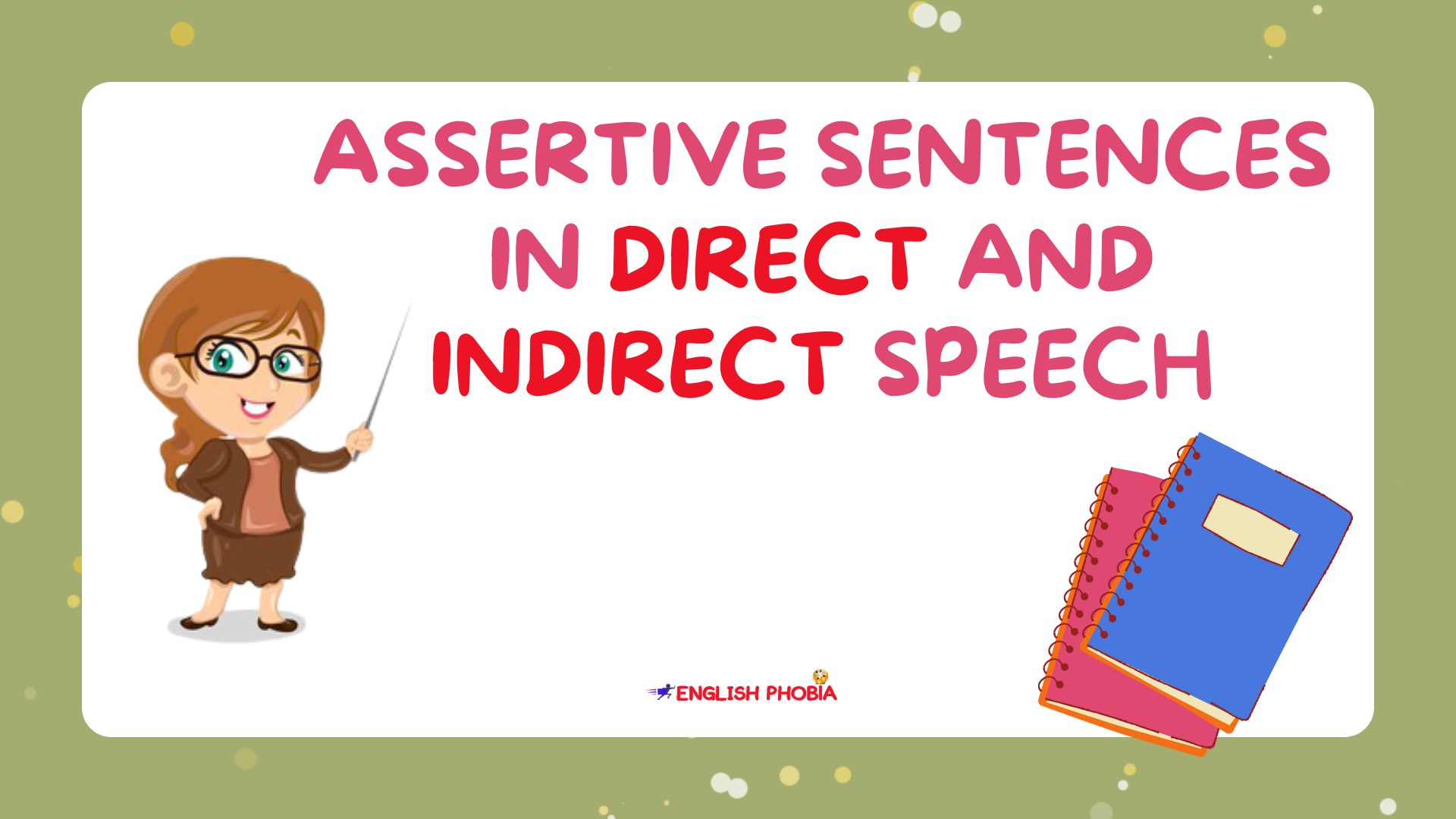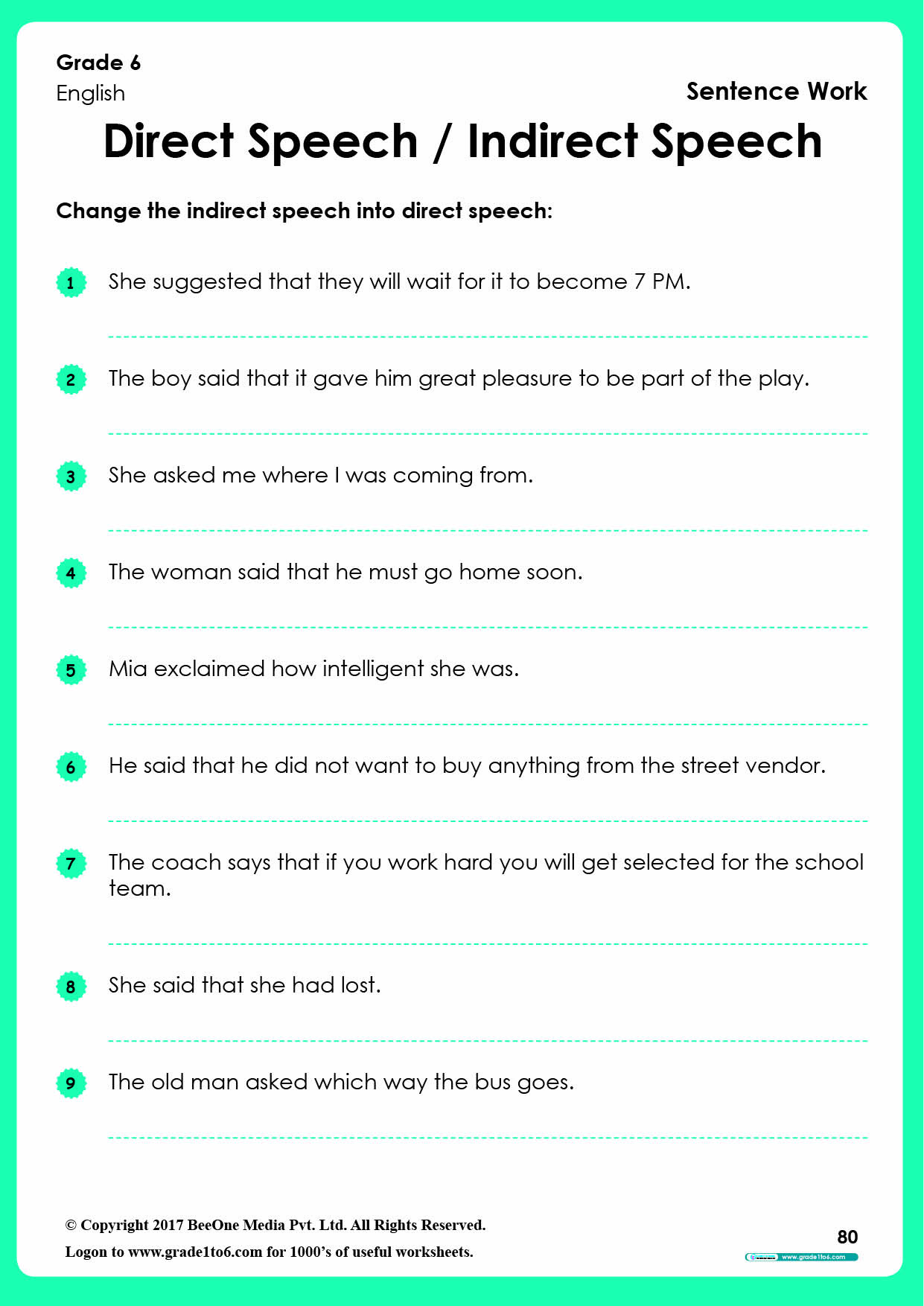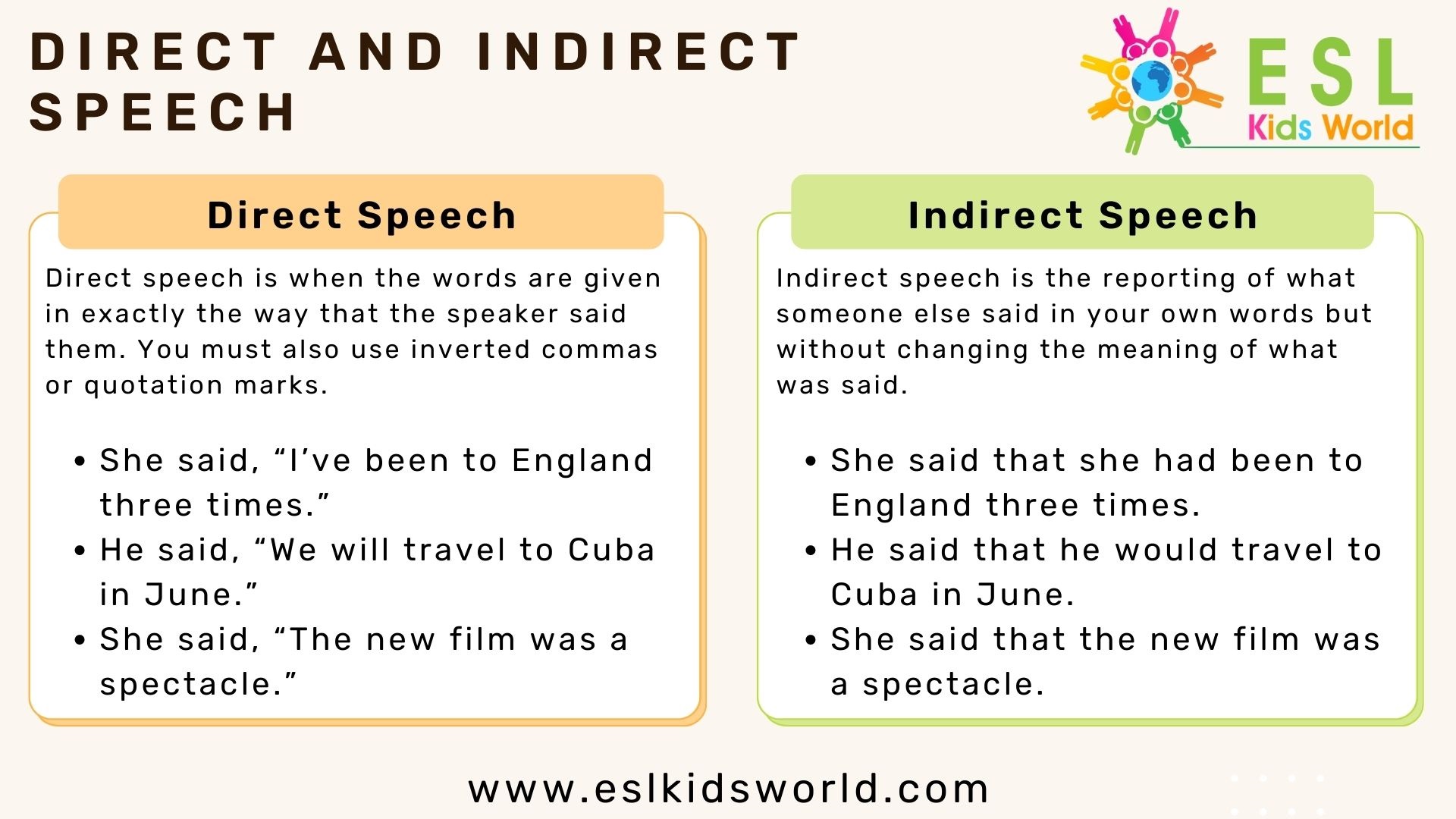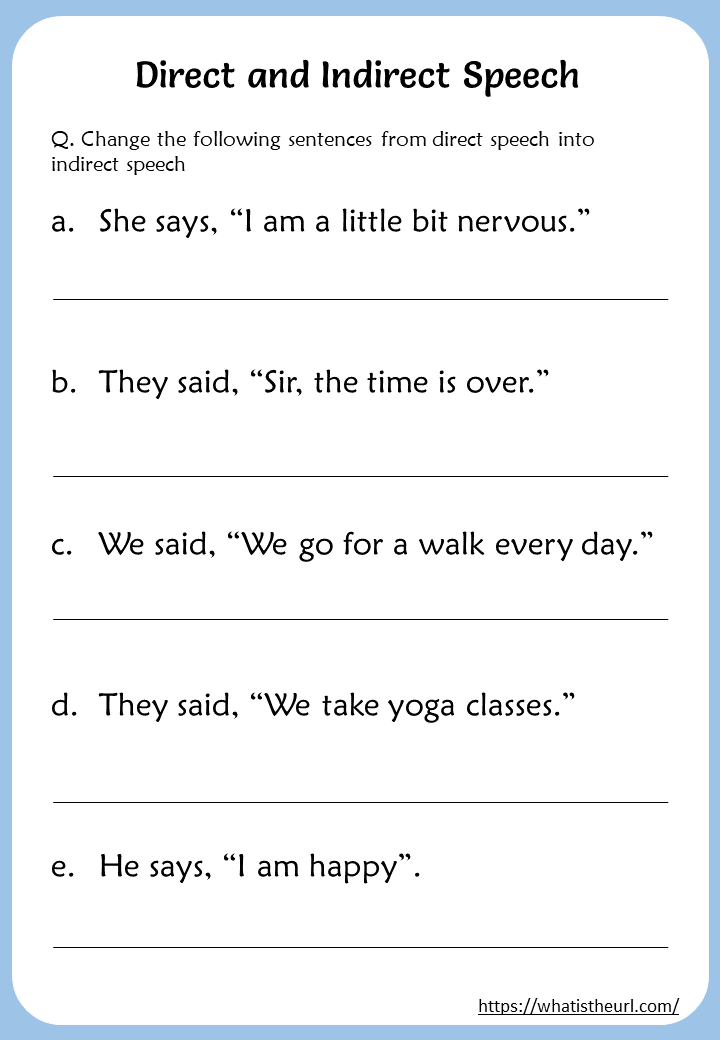
English Direct and Indirect Speech Example Sentences, 50 examples of direct and indirect speech
40 Examples of Direct and Indirect Speech Sentences Table of Contents Direct And Indirect Speech Examples Direct And Indirect Speech Examples While using English, we use direct and indirect speeches quite often. If a sentence is expressed exactly as it came out of the mouth of the person who said it, it becomes a direct speech.

ASSERTIVE SENTENCES IN DIRECT AND INDIRECT SPEECH LESSON 3 YouTube
Unit 7 - Exercise 1 - Reported speech. Rewrite the direct speech as reported speech to complete the sentences. Use contractions where possible.

Direct and Indirect Speech, Assertive Sentences in English Assertive Sentence Narration
Exercise 2. Change the following mode of narration from direct Speech to indirect speech. (1) The boys said, "It has been raining since morning. We cannot play today." Ans: The boys said that it had been raining since morning so they could not play that day. (2) Anjan's mother said, "Your father has left for Mumbai." Ans: Anjan's mother said that my father had left for Mumbai.

100 Examples of Direct and Indirect Speech English Study Here
In English, to report someone's words or their own words, you can use direct or indirect speech. These may include statements, questions, orders, advice. When moving from direct to indirect style, it is often necessary to change personal pronouns, demonstrative and possessive pronouns according to who says what: I → he / she me → him / her

Exercise1 Direct and Indirect Speech/Assertive Sentences UP Board English 10th Excellent
Pdf Description. Page 1 : Direct and Indirect Speech, What is Direct & Indirect Speech?, Direct Speech: the message of the speaker is conveyed or reported in his own, actual words without any change., Indirect Speech: the message of the speaker is conveyed or reported in our own, words., Example on Process of Conversion from Direct to Indirect.

Direct and Indirect Speech. Assertive Sentences Practice exercise. Solved exercise. YouTube
Reported speech 1. Reported speech 2. Reported requests and orders. Reported speech exercise. Reported questions - worksheet. Indirect speech - worksheet. Worksheets pdf - print. Grammar worksheets - handouts.

Assertive sentences in Direct and Indirect speech
Direct-Indirect Speech: Assertive Sentences Practice Exercises 6 April 2022 Grammar Exercises / School Grammar Direct - Indirect Speech practice questions include Assertive Sentences here. These questions will give practice on transforming a direct speech sentence into its indirect narration. Click here for more English Grammar study materials.

Direct and Indirect Speech / Narration Interrogative Sentences in English Grammar
3. The tenses of direct speech do not change if the reporting verb is in future tense or present tense. Direct to indirect speech example: Direct: She says/will say, „she is going‟ Indirect: She says/will say she is going. Rule 2 - Direct Speech to Indirect Speech conversion - Present Tense. Present Perfect Changes to Past Perfect.

Direct and Indirect Speech exercises Grade1to6
Assertive Sentences Direct and Indirect Speech is a utile topic in English Grammar. Consequently, practice is required to master the art of Changing Direct and Indirect Speech of Assertive Sentences. In this article, rules and examples of Direct Indirect Speech of Assertive Sentences are introduced with some easy steps. Contents show

Direct And Indirect Speech Verb Tense Changes With Rules & Examples 7 E S L English Grammar
Direct speech is mainly used to write dialogue or quoted speech. Read how to punctuate direct speech below. Insert the first set of quotation marks. Begin the sentence or phrase inside the quotation marks with a capital letter. Place the correct punctuation (period, question mark, exclamation point, etc.) at the end of the sentence.

Direct and Indirect Speech Examples Direct Speech Rules ESL Kids World
Step 1: Write down the reporting verb that is used to determine the Indirect Speech's tense. Step 2: Change the position and time to reflect the speaker's actual location and time. Step 3: For both the object and the subject, use the correct pronoun. Step 4: Make sure the sentence has the correct structure and word order.

Practice work of assertive sentences. It will give you more confidence to learn reported speech
Direct and indirect speech exercises There are many occasions in which we need to describe an event or action that happened, and very often that includes repeating what someone said. Such occasions can include a social situation as well as in a work email or presentation.

(PDF) Narration 1 ASSERTIVE SENTENCE DIRECT INDIRECT PARTHA PRATIM Saha Academia.edu
Reported questions + commands exercises PDF. Practise the difference between the direct and indirect speech in questions, commands and requests. Online exercises with answers: Direct - indirect speech exercise 1 Rewrite sentences in the reported speech. Direct - indirect speech exercise 2 Report a short dialogue in the reported speech.

Direct and Indirect Speech Useful Rules and Examples ESL Grammar Direct and indirect speech
Examples of Narration Change in Assertive Sentences. Direct Speech. Indirect Speech. Rabi said, "I am not feeling well today.". Rabi said that he was not feeling well that day. Madhu said to Mita, "we are going to be late.". Madhu told Mita that they are going to be late. They said, "We are participating in the competition.".

Direct & Indirect Speech Worksheets for 5th Grade Your Home Teacher
Direct and Indirect Speech: In this article, we are going to cover one of the most important parts of English Grammar, Direct and Indirect Speech. This is an important topic from an exam's point.

Direct and Indirect Speech Direct and indirect speech, Indirect speech, Sentence correction
Verbs of Reported speech (if the reporting verb is in past tense) (list 2) Direct speech → Indirect speech Am / is / are → was / were Was / were → had been Has / have → had Had → had had Shall / will → would Can → could May → might Must, should → must, should Verb1 → verb2 Verb2 → had + verb3 Change of time and place expressions in past tense (list 3) now → then ago →.